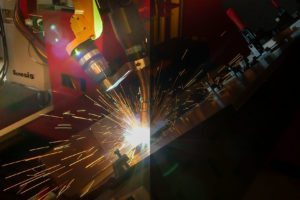Robotic welding is most effective in high-volume, repetitive applications where minimal programming and tooling changes are needed. In such scenarios, the system runs smoothly with high uptime, making it an ideal choice for mass production. However, not every manufacturing process fits this model. For smaller companies, the challenge lies in determining whether robotic welding can deliver a meaningful return on investment (ROI). Unlike large-scale operations, small batch production involves frequent part changes, which can complicate automation efforts. But with the right approach, even small shops can benefit from robotic systems. Thanks to recent advancements in automation technology, robotic welding has become more accessible than ever. It's no longer just for big manufacturers. Companies of all sizes can now explore automation and potentially unlock significant cost savings and efficiency improvements. If you're unsure about the ROI of robotic welding, you might be wondering why it's worth considering at all. There are several compelling reasons that make automation a smart move, especially for smaller businesses. First, automation helps level the playing field against larger competitors. Big companies often have the resources to invest in advanced technologies like robotic welding, giving them a competitive edge. To stay relevant, smaller shops need to adopt similar solutions to remain efficient and cost-effective. Second, there's a growing shortage of skilled welders in the U.S. According to the Department of Labor, the industry will need to add 12,850 new welders each year until 2024 just to meet demand. Robotic welding offers a reliable solution to this problem, reducing dependency on human labor and ensuring consistent output. Every application is unique, and there's no one-size-fits-all approach to automation. That said, certain elements are crucial when implementing robotic welding in small batch environments. First, your robotic system should have a flexible work envelope with multiple axes. This allows the robot to handle different types of parts efficiently, which is essential when working with small batches that involve a variety of components. Second, an efficient offline programming system is key. While welders can learn to operate robots, using specialized software from a system integrator can significantly speed up the deployment process. This ensures that your robots are productive from day one, helping you achieve ROI faster. Other factors include ease of maintenance, scalability, and compatibility with existing workflows. Choosing the right partner with experience in small batch automation is also critical to success. While achieving ROI in small batch welding may require careful planning, it's absolutely possible with the right setup. The key is to understand your needs, invest in the right technology, and partner with an experienced integrator. If you're interested in learning more about how robotic welding can benefit your business, explore our collection of case studies to find real-world examples that match your operation. mold steel,mold steel,car mold steel,auto mold steel Jiangyou ChongxinSpecial Metal Materials Co., Ltd. , https://www.zhongxindiesteel.comRobotic Welding: Can You Achieve ROI in Small Batch Production?

Why Consider Robotic Welding?
Key Factors for ROI in Small Batch Production